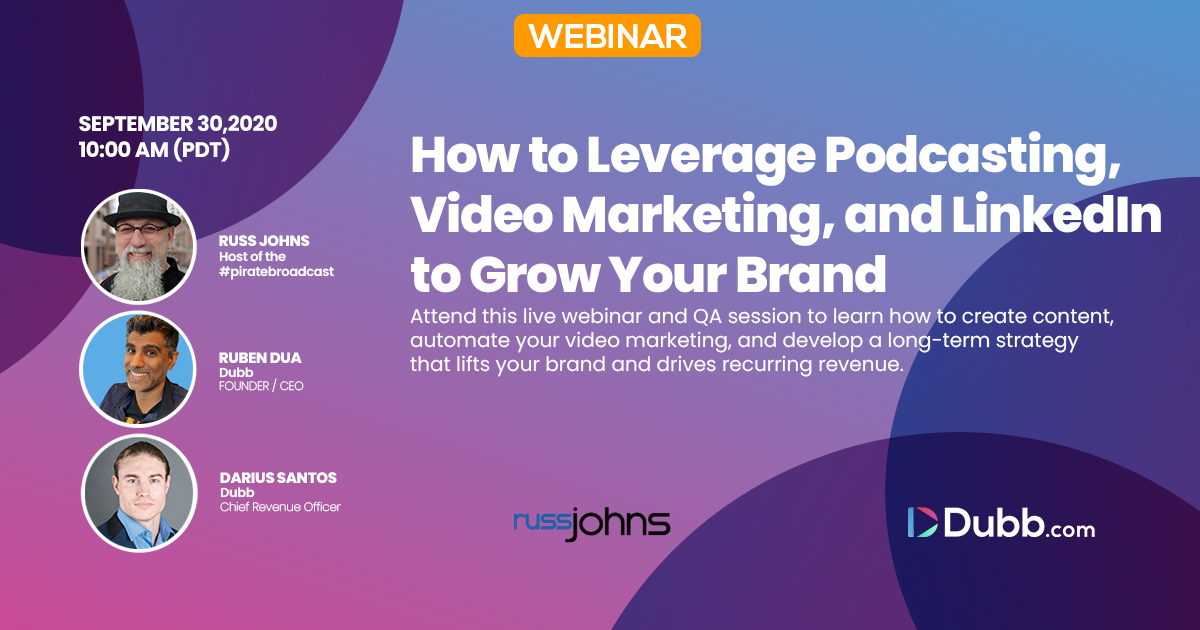In this webinar, we discussed how to create content, automate your video marketing, and develop a long-term strategy that lifts up your brand and drives recurring revenue with the host of #thepiratesyndicate, Russ Johns, Dubb’s Chief Revenue Officer, Darius Santos, and Dubb’s CEO and Founder, Ruben Dua.
Everything revolves around the amorphous place that is the internet these days. Our present reality consists of almost every conversation, transaction, and any other form of interaction done virtually. You can look up information, send a message to someone, avail of a product or service, and just about any other action you can think of—all with the click of a button.
The internet has become significantly influential with regard to the way we do life. Part of this paradigm shift is the way that businesses go about building and marketing their brand.
Gone are the days when salespeople had to chase and convince target customers, literally. Gone are the days when prospects would take time out of their day to listen to your presentation after knocking on their doors.
As the world continues to progress technologically and every industry shifts into digitalization, traditional marketing methods—specifically cold calling—are becoming more and more obsolete.
This might seem convenient for salespeople and marketers familiar with new media’s ins and outs, but not exactly. The field of sales and marketing is becoming increasingly competitive—what with everything readily available and easily accessible, right at our fingertips. If people were looking to purchase a product, they could hop on the web, browse numerous sites and catalogs, and have the product delivered right at their doorstep, practically without moving a muscle. If businesses were to search for employees or partnerships, they would most likely disseminate the necessary information via several social networking channels.
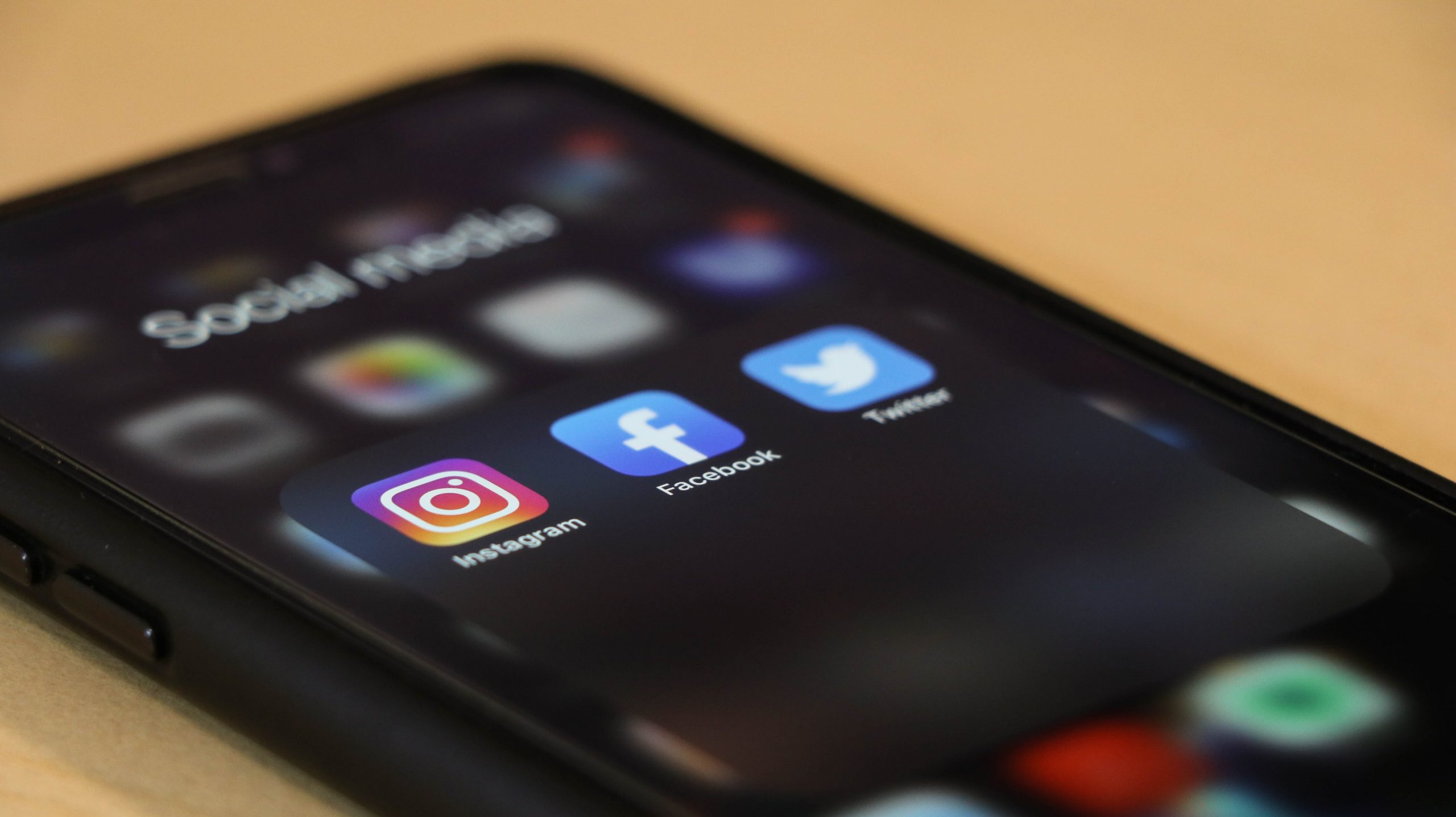
This is us now. Everyone’s consistently competing for the attention of everyone else. It has become easy to get lost in the noise, that reaching your target audience and establishing your brand can seem like massive obstacles that are impossible to get over—especially if you don’t have the proper tools and the right reasons.
Nevertheless, despite the competitiveness, the formula necessary to be successful in business isn’t too complicated, nor does it have to be very difficult.
Now, you might have heard of the know, like, and trust principle. It may have worked for some. But if we closely examine this model, considering the ubiquity of the internet and recognizing its nature and possibilities, it would probably be best to turn this theory around.
It starts with trust.
You see, this digitalization we have been experiencing has made people more aware and extra vigilant. It is already basic human nature to not conduct any business with anyone we don’t wholly believe in. We can never fully open our doors to someone and get to know them, let alone grow a liking for them if they don’t yet have our trust.
As they say, trust is the foundation for any firm and successful relationship—take note: any relationship, not just personal relationships. So then, the relationships that we, as entrepreneurs and business owners, make with our clients, shouldn’t be merely transactional and superficial. We must build relationships with clients founded on trust. Everything that we do should come from a place of genuine care and awareness for their best interests—not just our own.
Yes, business is about converting leads and closing sales. But ultimately, it’s also all about providing value to other people. “Providing value to clients” is something we often hear in business talks. And while it has become somewhat of a cliched phrase, its underlying truth has never waned. Adding value to clients should be our first and last objective. Because if we only saw prospective clients as mere tools for making a profit and selling our services was the sole motivation, we are bound for colossal disappointment.
How then do we effectively develop trust and positively add value to our clients? Well, that’s what we’re here to tell you.
With great honor, we present to you this webinar that Dubb recently held with Russ Johns. Russ is an experienced speaker, brand and marketing consultant, and social media strategy coach, in case you didn’t already know. He is also the host of the #PirateBroadcast, a show that he created to have conversations with interesting people who do interesting things. Russ aims to help entrepreneurs make an online impact without much of the technical overwhelm. He is driven by his passion for connecting with people, developing meaningful relationships, and empowering others passionate about doing the same.
Speaking with Dubb chief revenue officer Darius Santos and Dubb founder and CEO Ruben Dua, Russ went over a ton of valuable topics during the webinar, including ways on how to create valuable content, the process of automating your video marketing, and how to develop long-term strategies that are sure to elevate your brand and drive recurring revenue. In essence, we wanted to discuss building trust, providing value, and building your brand by leveraging podcasting, video marketing, and LinkedIn.
Let’s get into it.
First and foremost, Russ reminded us that, and we cannot stress this enough…
Communication is critical.
You must always be on the search for windows to connect and participate in relevant conversations with people. No matter how good your advertising strategies may be, you can’t not have the time to make connections.
Come to think of it, most successful business owners got to where they are because they dedicated much time listening to their audience—their wants, needs, and most importantly, feedback.
At Dubb, we believe that allowing for open dialogue and providing feedback is very important. And so, we make it a priority to hear from our users. We come up with some features and functionalities on our own, but our platform is built mainly on what our users say. Customer feedback is invaluable to us, and prioritizing it allows us to grow and adapt. Because in the end, our clients who are regularly using the platform to accomplish tasks are the ones to know which areas need tweaking and refining. And to provide value, we shall deliver.
How we communicate with our community is vital. Now more than ever, we need to figure out innovative methods for client outreach that will best display authenticity and reliability. Even with our attempts to post multiple contents regularly, people can still choose to pay no attention to our material. The times when salespeople would go door-to-door to advertise to prospects are now just about over. Everyone is allowed the luxury of choosing what they consume. And as we all know, accessing information today doesn’t take much effort nor time. Therefore, what you put out better be impressive and engaging.
As you may have heard from Russ, communication is evolving. The world is evolving. The way we do life is primarily changing. Today, communication in business takes the form of live stream shows, podcasts, and blog posts. These may sound like they involve much work—and at times they might—but there are plenty of ways to simplify them and still meet success.
Communication Opportunity #1: Podcasting
To date, there are more than 1 million podcast shows and over 34 million podcast episodes available to listen to. In 2020, not less than 155 million people listen to podcasts every week. These numbers are rapidly climbing daily.
Why is podcasting becoming so popular, you ask?
One, they save listeners a considerable amount of time. By listening to podcasts, listeners are able to take part in relevant discussions without having to set aside the time to read long forms of text or watch videos. Multitaskers find podcasts convenient—they’re immediate, engaging, and genuinely compelling.
In terms of building relationships, podcasts allow for intimacy—albeit relatively one-way. It’s right in your ear, it feels personal, and of all communication mediums today, podcasting is the closest to a relationship.
If you’re one with excellent communication skills and are very conversational, then podcasting might be the best fit for you. Also, establishing your personal brand is one of the many benefits of podcasting. Still, you have to consider if it fits into your workflow and if it’s a journey that you’re willing to put your energy into.
Now, you might be thinking, why should you start podcasting if everyone else is already doing it? Whatever happened to the business and marketing field being extremely competitive?
It’s not about being an internet-famous podcaster or gaining much wealth with your podcasts. Not at all. Podcasting has more to do with reaching out to your target consumers and, you guessed it, gaining their trust and forming meaningful relationships. When you’re consistent in creating and providing valuable content for your audience, it’s only a matter of time before they start noticing your brand and perceiving you as both a thought leader and an authority figure in your specific industry.
If you’re consistent and intentional in seeking chances to build relationships and provide value, you’ll surely see fruit. Who knows, people who don’t even have an immediate need for your service or those who have no general interest at all might start becoming your referral partners. Despite not participating as actual clients, they might still take part in your business because of the value that you have provided them. You never really know how the relationships you’re building are going to pan out. As long as you’re putting people first, the time and effort you dedicate to the outreach process are sure to pay off eventually.
You might be withholding from podcasting because you think there isn’t anything more to talk about. You’re aware that there are already many podcasts out in the media, and it’s causing you to hesitate to start your own because you feel as if everything there is to say has already been said. Like Darius noted, just because a particular industry is taken doesn’t mean that that space is filled. It doesn’t mean that there’s no room for you. It only means that you have people ahead of the journey to look up to and serve as leaders for you to emulate. To put it simply, you shouldn’t let them hold you back. Instead, draw your inspiration from them.
Furthermore, if you find that having conversations with various people from different backgrounds is something you enjoy, podcasting might be the best decision you could ever make. The last thing you need as a business owner is additional work that only feels like another task. When you don’t see the joy in doing an activity, you’re more likely to suffer fatigue easily and not make the long-run.
You have to put in mind that creating content takes time. Success does not happen overnight. Particularly with podcasting, it’s going to take a lot of time and effort—which is why it’s essential to carefully consider if you’ll be able to commit to the process while still having fun.
Nevertheless, the rewards of being seen and heard, meeting people, providing value, obtaining opportunities, and establishing your authority carry far more outstanding merit than if you were to do nothing at all.
Are you planning on starting a podcast? Do it with the best intentions. Conduct podcasts with the motivation to create relationship-building opportunities, have conversations that extend those opportunities beyond an email, and ultimately learn from the people you meet with.
Finally, develop your podcast based on your lifestyle. Maybe you’re a busy mom taking care of a bunch of kids. Or you might be handling a part-time job somewhere else aside from your business. Perhaps you’re a CEO at some company with a tight schedule. You can always adjust your production timeline depending on your lifestyle. You could record in batches, maybe live stream once a month; it’s really up to you. As long as you’re willing, determined, and resourceful, it’s doable.
Let’s move on to another communication medium that we believe to be imperative to any business.
Communication Opportunity #2: Video Marketing
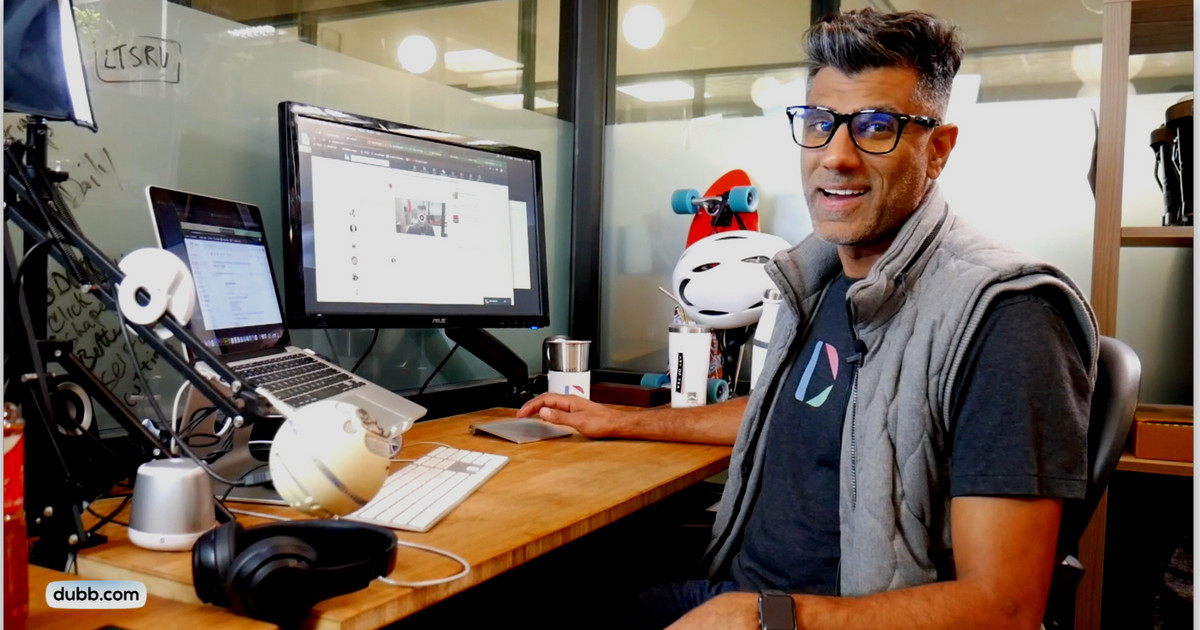
There are a lot of different ways to create content. But video has proven to be one of the best.
Before we get into how to use video and its benefits, let’s talk about the possibilities when simultaneously doing both video and podcasting. Podcasts are not always just in audio format. In most cases, podcasts are also recorded on video—just like our very own Connection Loop podcast. Taking this into consideration, you can build a system wherein you convert your live-streamed video podcasts into audio podcasts for streaming platforms, repurpose select video clips from the video podcast as bite-sized content, and even transform the videos into blog posts. Here at Dubb, we have a name for this: The Waterfall Method. It’s a functional strategy for posting valuable content consistently. The Waterfall Method, at its core, is all about cutting up long-form content into smaller and smaller pieces. Since everyone is often so busy, it’s always helpful to come across content that can quickly be consumed within a matter of minutes.
Now, we understand that the idea of capturing yourself on video or recording for a podcast may seem intimidating in the beginning. You don’t have to force it upon yourself immediately, but if you ever decide to step out of your comfort zone, it may be worth trying to begin with participating in someone else’s podcast or consuming others’ video content first.
But, you see, video has a far-reaching impact on communication. If you’ve ever disregarded a bunch of uninviting emails filling up your inbox, you’d understand just how beneficial video is.
We’ve already established this, but let’s recall. Adding value to clients must be a primary objective, and trust should be the initial step forward. We have to empty ourselves of the “what’s in it for me” mentality. It might sound counterintuitive, but adding value to others is always sure to bring in more returns.
One way to add value to clients and make an impact is to show them that you genuinely care about them and that you’re deserving of their trust.
Video does precisely that.

When you use video, you’re communicating with your prospects on a personal level—more personal than a blog post or a text message can ever be. By associating a face to your brand, you’re communicating that you are also a human being capable of emotion and understanding, not just another company that wants to waste their time with inauthentic sales pitches. The type of relationships that you can build with video? You can’t have those through traditional sales calls. The bottom line is that video is the best marketing tool for relationship building.
“Authenticity” seems to be the buzzword of the year—particularly in business, branding, and marketing. It’s fitting, seeing that every entrepreneur appears to be working on developing their personal brands. You see, this is why traditional sales and marketing strategies are becoming continuously more insufficient: the best way to come across as inauthentic is to tell people incessantly how authentic you are. It just doesn’t work because it’s all about showing them that you’re real, not merely telling.
Even so, different people equate the meaning of authenticity with different ideas. Some might say authenticity is about creating a natural and genuine conversation between you and your audience. Others might tell you that it’s when a brand or company stays true to its essence, what they represent, and whom they serve. Another definition of the word can translate to when brands are transparent enough to communicate their story, complete with the breakthroughs and the setbacks.
The question is, is there a way to embody each one of these definitions, all at once?
Well, yes, there is. The answer to that is still video.
Video lets your prospects know that they can come to you because you’re also human. Video is conversational and direct—it shows your audience what you value most. To add, by using video content, you’re allowing your clients to take part in the business journey and witness the highs and lows along with you.
With Dubb, you can achieve authenticity in every sense of the word.
Here’s what you need to know: Dubb is a video creation, customization, and distribution tool—you can do all of these in one easy-to-use platform. Dubb grants you the power to shoot and edit your videos, package them with your brand identity, and distribute them to your clients with little to no effort.
Allow us to take you through the video marketing process using Dubb, step-by-step:
Step One: Creation
Creating videos from scratch has never been this easy.

As Darius had demonstrated during the webinar, there’s a handy Dubb Chrome Extension that lets you access the tools you need to record from any window that you have opened. With it, you can upload pre-recorded videos or create videos from scratch. It offers a variety of recording options: you can choose to record your entire screen with complementary webcam and audio feed, capture a specific browser tab using partial screen record, shoot with just your webcam, upload any video from your local file library, or even add a video straight from YouTube.
Dubb is also available for use on mobile devices. The mobile app offers plenty of advanced functionality. It makes maximum use of both your front-facing and rear cameras by letting you switch between the two while recording. It’s pretty much a full-fledged video editing tool where you can add and join multiple clips together, type in text, insert emojis, and even add music. You don’t need any other software and equipment—just Dubb and your smartphone. It’s as fast and easy as point-and-shoot. No complicated editing interface, either.

People commonly think that video content requires high-end equipment and a large budget, but that couldn’t be farther from the truth. Now, there’s nothing necessarily wrong with producing videos with expensive cameras and well-scripted spiels. Excellence isn’t a crime. But what’s truthfully false and harmful is the belief that because you lack professional equipment, you can never create valuable and engaging video content. Besides, using a simple video recording tool saves you time and energy. Managing a business is already a great deal of work. Dubb helps you conserve your resources so you can spend them on other tasks that demand much effort. Trust us when we say that you wouldn’t want to waste too much of your time struggling to produce the most professional-looking videos when you could be going on live streams and having meaningful conversations with amazing people.
Everything that you will ever need to produce your videos is available on Dubb. Just grab your smartphone or your laptop, get the app, and you’re good to go.
Step Two: Customization
Communicating your brand is crucial to the video production process. Your brand identity is your own, and you must make sure that your prospects will remember it.
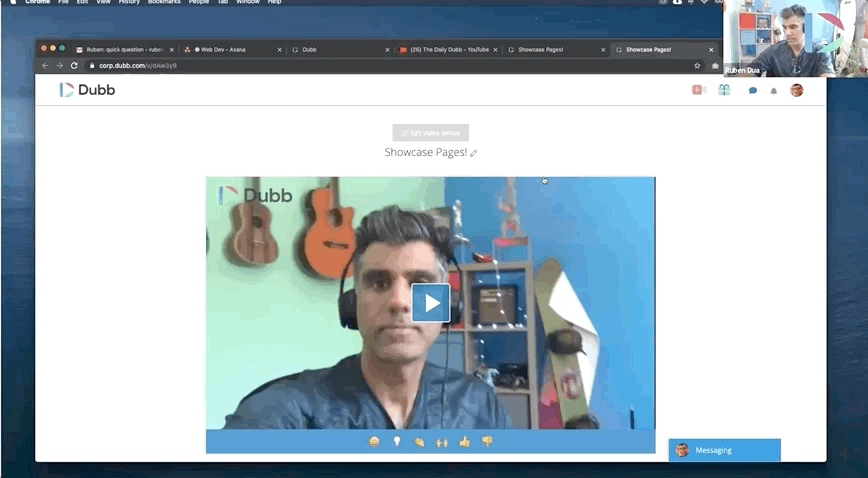
Dubb automatically takes care of the branding, packaging, and conversion focus features for you by the use of customized video landing pages. This functional element is conducive to creating opportunities, allowing for conversations, and ultimately making conversions. A video landing page that’s complete with your logo, necessary watermarks, a custom background image, and your brand’s color scheme assures and maintains your viewers’ focus toward your brand identity. This way, no other brands are competing for their attention—they’re only consuming what you want them to consume, allowing for a better understanding of what you offer and what you stand for. You don’t get the option to package your brand consistently on other video platforms.
And since we’re talking attention and focus, we might as well mention the video playlist feature for the video landing pages. Once you already have your prospects’ attention, you’d want to be sure that you’re not letting any interruption come between them and the material—which is what the video playlist was made for. As soon as one video ends, the next video automatically starts without the viewer having to click on any button. It’s a seamless transition that’s sure to sustain engagement. The choice of which videos to include in the playlist is entirely up to you. Just remember to make the set of videos as cohesive as possible. If you’re not a product, you can upload an introductory video. While if you’re looking to showcase your products and services, you can do so by uploading pre-recorded video content, followed by video testimonials, case studies, or social proofs.
Next, let’s talk about the call-to-action (“CTA”) buttons.

Yes, the purpose of the videos we put out is to inform, educate, and build trust. But ultimately, we want our prospects to take action. Actions can mean a number of different things—filling out a form, booking a meeting, downloading an attachment file, sending a message, and just about anything you can think of. In essence, the use of CTAs is to create direct opportunities from the message communicated in the videos. Dubb allows you to create your own CTAs for maximum functionality and a better buyer experience.
The customization magic doesn’t end with the playlists nor the CTAs. Did you know that you can set up customized presets for the landing pages with Dubb? You sure can. We say landing pages plural because it doesn’t have to be just the one. Maybe you’re someone handling various roles in a business. Then you will probably need multiple templates of landing pages that are distinct from one another. With this feature, you can make the experience unique to each person.
Another layer of customization is the personalized thumbnail or animated GIF preview of your video when sent via LinkedIn or email. You can even write in your recipient’s name as a header so that they will know it was made just for them.
We’ve talked about creation and customization. Now let’s get down to distribution.
Step Three: Distribution
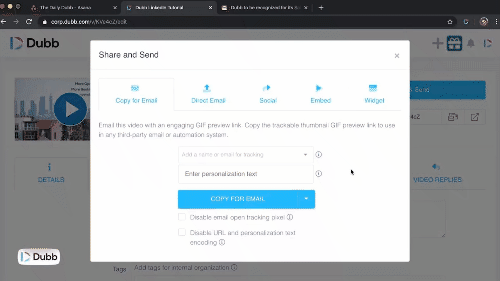
Dubb has a copy-for-email option that is universally compatible with any channel—whether it be LinkedIn, email, CRMs, or text messaging. Any platform where you can paste something, you can put in a Dubb video. Even when the medium or platform doesn’t allow images, you can still deliver your content as a link.
Dubb has direct integration with various major CRM and email platforms, some of which include LinkedIn, Gmail, Outlook, Salesforce, HubSpot, and Mailchimp. What this direct integration does is allow you to access Dubb’s features directly inside these platforms. The only thing you need is to look for the Dubb icon, and you’re ready to roll.
Another great feature is the ability to send out campaigns for bulk sending or automation directly from Dubb—all you have to do is link your email. It’s almost like duplicating yourself. You’ll have to put in work on the front end to build your sequences or frameworks, but once that’s done, Dubb will do the rest of the work for you.
If you’re having trouble navigating Dubb, you can access the tutorial center we have provided. There you will find instructional videos about everything on the platform.
To conclude, how does all of this tie up with LinkedIn?
Leveraging LinkedIn
There are over 660 million LinkedIn users today. Of the 660 million, the number of monthly active users amount to at least 310 million. On top of that, LinkedIn gains a new user every 2 seconds—that’s a significant number of possibilities to make connections and a whole lot of room for expansion and growth. Bear in mind that these numbers are continuing to rise. So, if you’re thinking of leveraging LinkedIn for your sales and marketing endeavors, know that there is no better time to do so than now.
Taking Russ’ advice, create a workflow that works for you. You don’t have to make more than is needed. You don’t need to be visible everywhere all the time. All you need to do is create a system that works for you and then work that system.
And in engaging with your audience, remember to value everyone’s time like how you value your own.
Provide value, build trust, repeat. That’s how you grow your brand.
Start using Dubb today, and see just how simple it is to create content that people will find value in.

